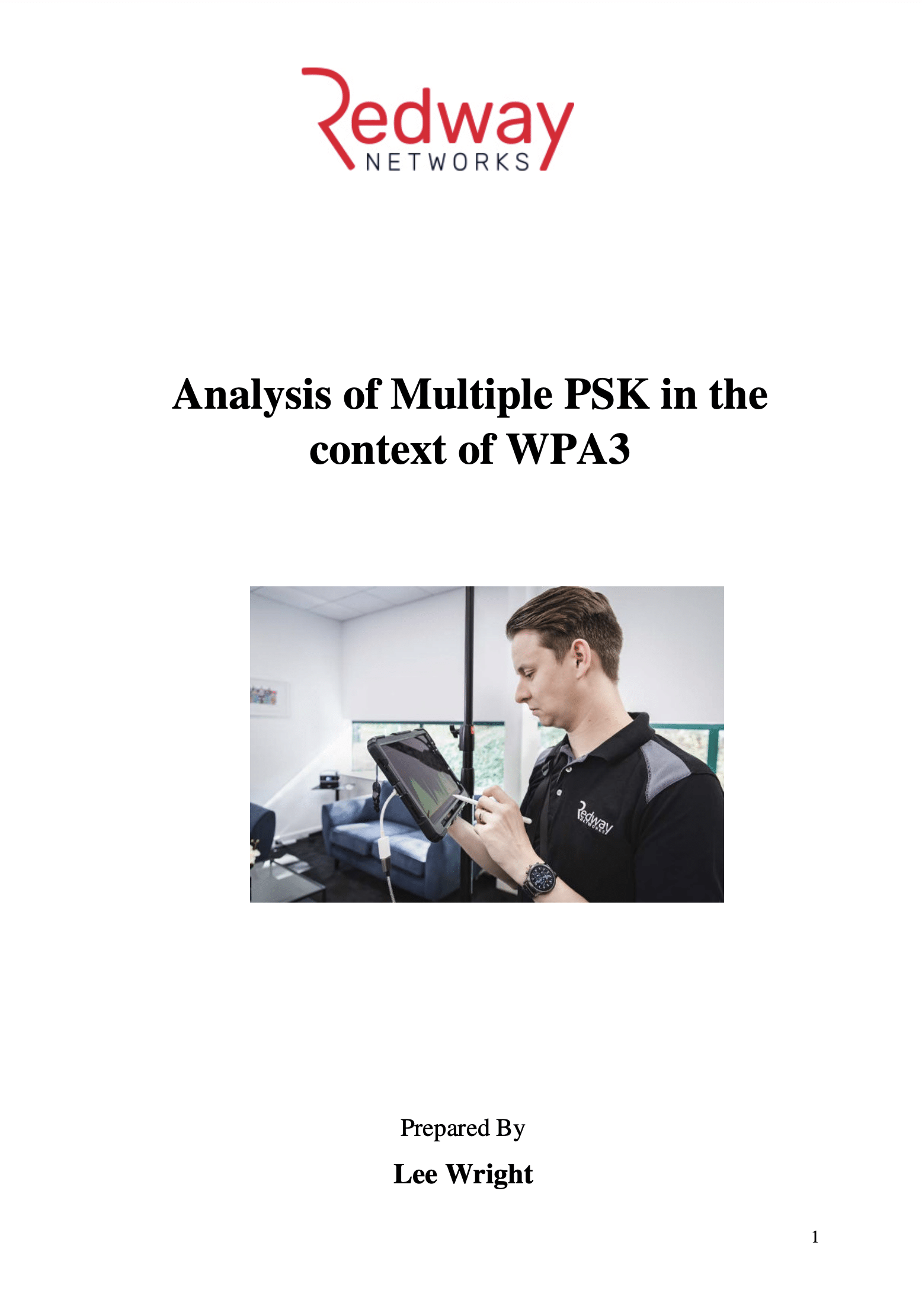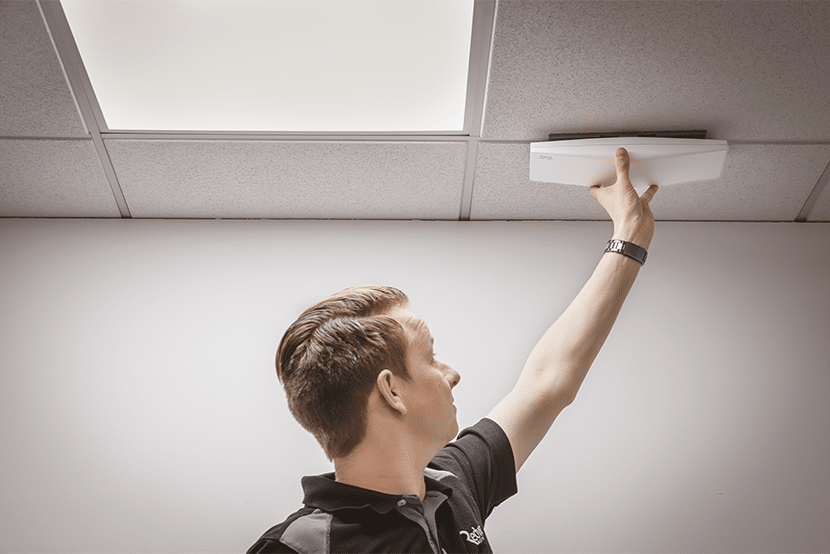Analysis of Multiple PSK in the context of WPA3
The ability to use multiple passphrases on a single Service Set Identifier (SSID) has been in place for more than a decade; since that time, this method of access has grown in popularity and has seen increasing adoption from different Wireless Local Area Network (WLAN) Vendors.
Wi-Fi Protected Access 2 (WPA2) underpins most of these existing solutions. However, weaknesses with WPA2, coupled with the inability of WPA2 to operate on the 6GHz frequency, necessitate alternative solutions.
In the whitepaper below, Lee Wright, wireless engineer at Redway Networks examines both standards-based implementations of WPA2 and proprietary implementations of Multiple Pre-Shared Key (PSK) solutions using WPA2. Afterwards, the newer successor to WPA2, Wi-Fi Protected Access 3 (WPA3), is examined, assessing why it is much more challenging to implement a multiple PSK solution using WPA3.
Lastly, this paper introduces an alternative solution to multiple PSK that provides security improvements over WPA2 and is compatible with 6GHz.
Leigh covers the following questions:
1. What is the PSK in WPA3?
2. What is the difference between WPA2-PSK and WPA3-PSK?
3. What is PSK in Wi-Fi security?
4. What is the difference between WPA3 personal and PSK?
5. What does PSK mean?
6. Which is better WPA2 or WPA3?
7. How does WPA3 work?
Please click on the image below to view the whitepaper.



